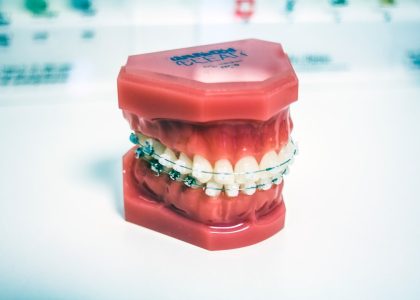Pugs are known for their distinctive coat colors, which can vary widely from fawn and apricot to black, silver, and brindle. The genetic basis of pug colors is a fascinating subject that has intrigued scientists and pug enthusiasts alike. The coat color of a pug is determined by the interaction of various genes, including those responsible for pigmentation and pattern formation. In general, pug coat colors are the result of a combination of two main pigments: eumelanin, which produces black and liver colors, and phaeomelanin, which produces red and yellow colors. The genes that control the production and distribution of these pigments can result in a wide range of coat colors and patterns in pugs.
The genetics of pug coat colors can be quite complex, as multiple genes can interact to produce a single coat color. For example, the fawn color in pugs is the result of a combination of genes that produce a light base color with a darker mask on the face. Similarly, the apricot color in pugs is the result of a combination of genes that produce a lighter base color with a slightly darker shading on the ears and back. Understanding the genetic basis of pug colors can help breeders predict the potential coat colors of pug puppies and can also shed light on the inheritance patterns of specific coat colors within pug populations. Overall, the genetic basis of pug colors is a complex and fascinating subject that continues to be studied and explored by scientists and pug enthusiasts alike.
Key Takeaways
- Pug colors are determined by genetics, with various combinations of genes leading to different coat colors.
- Fawn and apricot are the most common pug colors, with fawn being a lighter shade and apricot being a deeper, reddish color.
- Black pugs have a unique and striking coat color, which is caused by a specific gene that results in a solid black coat.
- Silver and brindle pugs are rare variations, with silver pugs having a diluted black coat and brindle pugs having a mix of dark and light stripes.
- The controversy surrounding “rare” pug colors involves ethical concerns and potential health issues associated with breeding for specific coat colors.
- Caring for pugs of different colors involves understanding their specific needs and potential health risks associated with their coat color.
- Embracing the diversity of pug colors in the pug community involves celebrating and accepting all pug colors, while also being mindful of responsible breeding practices.
Fawn and Apricot: The Most Common Pug Colors
Fawn and apricot are the most common coat colors found in pugs and are often considered the classic pug colors. Fawn pugs have a light, creamy coat color with a distinctive black mask on their face, while apricot pugs have a slightly darker shading on their ears and back. These coat colors are the result of a combination of genes that produce a light base color with darker shading in specific areas, creating the classic pug look that is beloved by pug enthusiasts around the world. Fawn and apricot pugs are known for their sweet and affectionate nature, making them popular pets for families and individuals alike.
The fawn and apricot coat colors in pugs are not only visually appealing but also have historical significance. These colors have been present in pugs for centuries and are often associated with royalty and nobility. In fact, fawn and apricot pugs were favored by European monarchs and were often depicted in royal portraits and tapestries. Today, fawn and apricot pugs continue to be cherished for their charming appearance and delightful personality. Whether they are lounging on the couch or playing in the yard, fawn and apricot pugs never fail to capture the hearts of those around them with their endearing looks and lovable demeanor.
Black Pugs: A Unique and Striking Coat Color
Black pugs are a striking and unique variation of the classic pug breed. Their sleek black coat color sets them apart from their fawn and apricot counterparts, making them stand out in any crowd. The black color in pugs is the result of a specific combination of genes that produce a rich, dark coat color without any other markings or shading. Black pugs are often admired for their elegant appearance and are considered to be quite rare compared to fawn and apricot pugs. Their distinctive coat color has made them popular among pug enthusiasts who appreciate their unique beauty.
In addition to their striking appearance, black pugs are known for their charming personality and affectionate nature. They are just as playful and loving as their fawn and apricot counterparts, making them wonderful companions for individuals and families alike. Black pugs have been cherished throughout history for their distinctive appearance and delightful temperament, making them a beloved variation of the classic pug breed. Whether they are snuggled up on the couch or out for a walk in the park, black pugs never fail to turn heads with their striking coat color and lovable personality.
Silver and Brindle Pugs: Rare and Beautiful Variations
| Characteristic | Silver Pug | Brindle Pug |
|---|---|---|
| Coat Color | Silver or gray | Brindle pattern |
| Eye Color | Usually dark | Usually dark |
| Popularity | Rare | Rare |
| Temperament | Friendly and affectionate | Friendly and playful |
| Health Concerns | Similar to other Pugs | Similar to other Pugs |
Silver and brindle are two rare and beautiful coat colors found in pugs that are less common than fawn, apricot, and black. Silver pugs have a unique silver-gray coat color that sets them apart from other pug variations, while brindle pugs have a distinctive striped pattern that gives them a one-of-a-kind appearance. These rare coat colors are the result of specific genetic combinations that produce unique pigmentation patterns in pugs, resulting in their striking and beautiful appearance. Silver and brindle pugs are often sought after by pug enthusiasts who appreciate their rarity and unique beauty.
Silver and brindle pugs are not only visually stunning but also have endearing personalities that make them wonderful companions. They are known for their playful nature, affectionate demeanor, and unwavering loyalty to their owners. Despite being less common than other coat colors, silver and brindle pugs have captured the hearts of many with their unique appearance and delightful temperament. Whether they are playing in the yard or cuddled up on the couch, silver and brindle pugs never fail to impress with their rare coat colors and lovable nature.
The Controversy of “rare” Pug Colors
The topic of “rare” pug colors has sparked controversy within the pug community, with some arguing that certain coat colors are being unfairly labeled as rare for profit-driven reasons. While it is true that some coat colors, such as silver and brindle, are less common than fawn, apricot, and black, there is debate over whether these variations should be considered rare or simply less prevalent. Some argue that labeling certain coat colors as rare can lead to unethical breeding practices aimed at producing these “rare” colors for profit, potentially compromising the health and well-being of the dogs involved.
On the other hand, proponents of recognizing rare pug colors argue that these variations deserve acknowledgment for their unique beauty and genetic significance. They believe that celebrating rare coat colors can help raise awareness about the genetic diversity within the pug breed and promote responsible breeding practices that prioritize the health and welfare of the dogs. Ultimately, the controversy surrounding “rare” pug colors highlights the importance of ethical breeding practices, responsible pet ownership, and appreciation for the diverse range of coat colors found within the pug community.
Caring for Pugs of Different Colors

Caring for pugs of different colors requires an understanding of how their coat color may impact their health and well-being. While all pugs require regular grooming, exercise, and veterinary care, certain coat colors may be more prone to specific health issues. For example, fawn and apricot pugs may be more susceptible to skin conditions due to their lighter coat color, while black pugs may be more prone to overheating in hot weather due to their darker coat color. It is important for pug owners to be aware of these potential differences and take appropriate measures to ensure the health and comfort of their pets.
In addition to physical care, it is also important for pug owners to provide emotional support for their pets regardless of their coat color. Each pug is unique, regardless of its coat color, and deserves love, attention, and proper care from its owner. Whether they are fawn, apricot, black, silver, or brindle, all pugs thrive on affection, companionship, and positive reinforcement from their owners. By understanding the specific needs of pugs of different colors and providing them with attentive care, owners can ensure that their pets lead happy, healthy lives regardless of their coat color.
Embracing the Diversity of Pug Colors in the Pug Community
Embracing the diversity of pug colors within the pug community is essential for promoting inclusivity, appreciation for genetic diversity, and responsible pet ownership. Rather than focusing solely on rare or common coat colors, it is important for pug enthusiasts to celebrate the unique beauty of all pugs regardless of their coat color. By recognizing the value of each individual pug and promoting ethical breeding practices that prioritize health over specific coat colors, the pug community can foster a culture of inclusivity and respect for all variations within the breed.
Furthermore, embracing the diversity of pug colors can help raise awareness about genetic health issues that may be associated with specific coat colors. By acknowledging these potential differences and advocating for responsible breeding practices, the pug community can work together to ensure the health and well-being of all pugs regardless of their coat color. Ultimately, embracing the diversity of pug colors within the pug community can help promote a culture of compassion, understanding, and appreciation for all variations within this beloved breed.
FAQs
What are the different colors of pugs?
Pugs come in a variety of colors including fawn, black, silver, apricot, and brindle. These colors can also come with different markings such as a black mask or a black trace down the back.
Are there any rare or unusual colors of pugs?
While fawn and black are the most common colors for pugs, there are also some rare and unusual colors such as white, albino, and merle. These colors are not recognized by breed standards and may be associated with health issues.
Do pug colors affect their personality or behavior?
The color of a pug does not have any direct impact on their personality or behavior. Pugs are known for their friendly and affectionate nature regardless of their color.
Can pug colors change as they age?
Pug puppies may have a different color coat than their adult counterparts. Some pugs may also experience a change in coat color as they age, such as a fawn pug developing a more silver or apricot hue over time.
Do pug colors affect their health or lifespan?
The color of a pug does not directly impact their health or lifespan. However, certain coat colors, such as albino or merle, may be associated with an increased risk of health issues and should be approached with caution.





